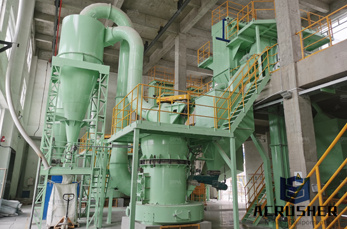How is anthracite formed
Anthracite is a very pure form of coal (9298% carbon). The vast majority of the coal today was laid down duing the Carboniferous Era (359299 Million.
 WhatsApp)
WhatsApp)
Anthracite is a very pure form of coal (9298% carbon). The vast majority of the coal today was laid down duing the Carboniferous Era (359299 Million.

Sep 28, 2011· Anthracite Coal vs Bituminous Coal Coal is a fossil fuel similar to natural gas and oil, which is in a solid rock form. Coal is formed by collecting plant

Learn the facts about anthracite coal (a hard coal that''s in short supply) from its unique characteristics to its uses in energy production.

What is Coal and How Does It Form Download as PDF File (.pdf), Text File (.txt) or view presentation slides online.

Nov 28, 2010· Best Answer: Sometimes also called ''hard coal'', anthracite was formed from bituminous coal when great pressures developed in folded rock strata during ...

Coal – Formation of Coal – Types of Coal – Peat, Lignite, Bituminous Coal Anthracite Coal. Carbon content in different types of coal. Importance of each type.

determined the hardness the coal. This process of coal formation was repeated sporadically for ... Anthracite coal has a very high ... Facts About Indiana

THE NATURE AND OCCURRENCE OF ASH FORMING MINERALS IN ANTHRACITE by W. SPACKMAN ... ability of Anthracite and Other Coals Coal Characteristics and Their

ANTHRACITE COAL MINES AND MINING. ... The mine described is the simplest form, ... Last year in the anthracite mines there were 411 lives lost and 1,057 ...

Coal formation. All living plants ... The degree of change undergone by a coal as it matures from peat to anthracite is known as coalification.

A Walk Through the Rise and Fall of Anthracite Might ... and most home furnaces burned coal. Anthracite was preferred ... (Small amounts of coal are being formed .

Coal Formation starts with accumulation of organic matter ... brown coal; Bituminous coal, soft coal; and Anthracite, hard coal. Anthracite is dense, nice and hard, ...

THE FORMATION OF COAL What is Coal? ... accompanied by a rise in the carbon and energy contents and a decrease in the moisture content of the coal. Anthracite

CoalForming Environments: A generalized diagram of a swamp, showing how water depth, preservation conditions, plant types, and plant productivity can vary in ...

Coal formation begins in swamps and bogs as vegetable matter changes into the only rocks that burn. Learn about the stages of these rocks that change from peat to ...

Like oil and natural gas, coal is a fossil fuel. It started forming over 350 million years ago, through the transformation of organic plant matter.

Observe an animation showing coal form. ! ... Heat and pressure metamorphose bituminous coal to anthracite, a hard coal that is almost pure carbon. Jennifer Loomis ...

Steam coal, a grade between bituminous coal and anthracite ... An alternative form of coal combustion is as coalwater slurry fuel (CWS), ...

bituminous coal is formed (black and brittle and very polluting) step 5. anthracite coal is formed (highest amount of carbon and clean burning)

How Did Coal Form? Coal is the compacted and preserved remains of ... shows a typical day of producing coal in a northeastern Pennsylvania anthracite coal mine.

Hotter, cheaper, easier, cleaner and safer – anthracite coal is the better choice when considering your next heating or supplemental heating resource.

Anthracite Anthracite is the highest rank of coal. It has a carbon content of over 87% on a dry ashfree basis. Anthracite coal generally has the highest heating ...

THE ANTHRACITE ADVANTAGE A FACT SHEET ON ANTHRACITE COAL What is Anthracite? All coal is not the same. Anthracite is a highly carbonated form of cleanburning coal ...

Anthracite is a hard, compact variety of coal that has a submetallic luster. It has the highest carbon content, the fewest impurities, and the highest energy density ...
 WhatsApp)
WhatsApp)